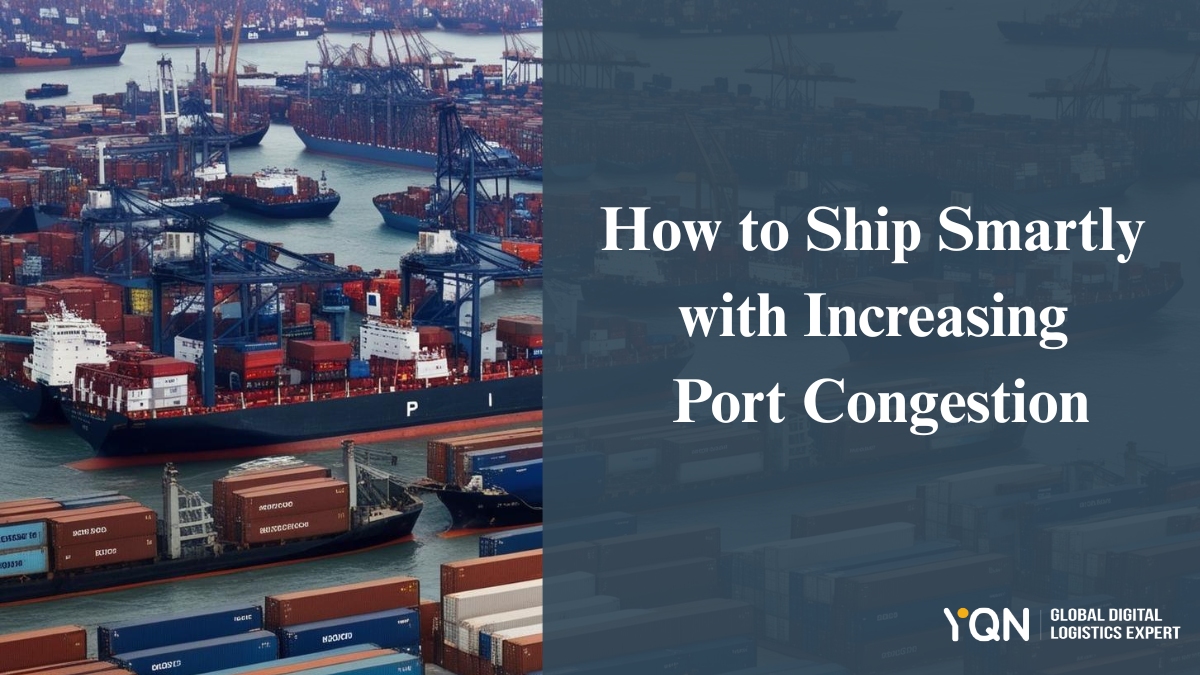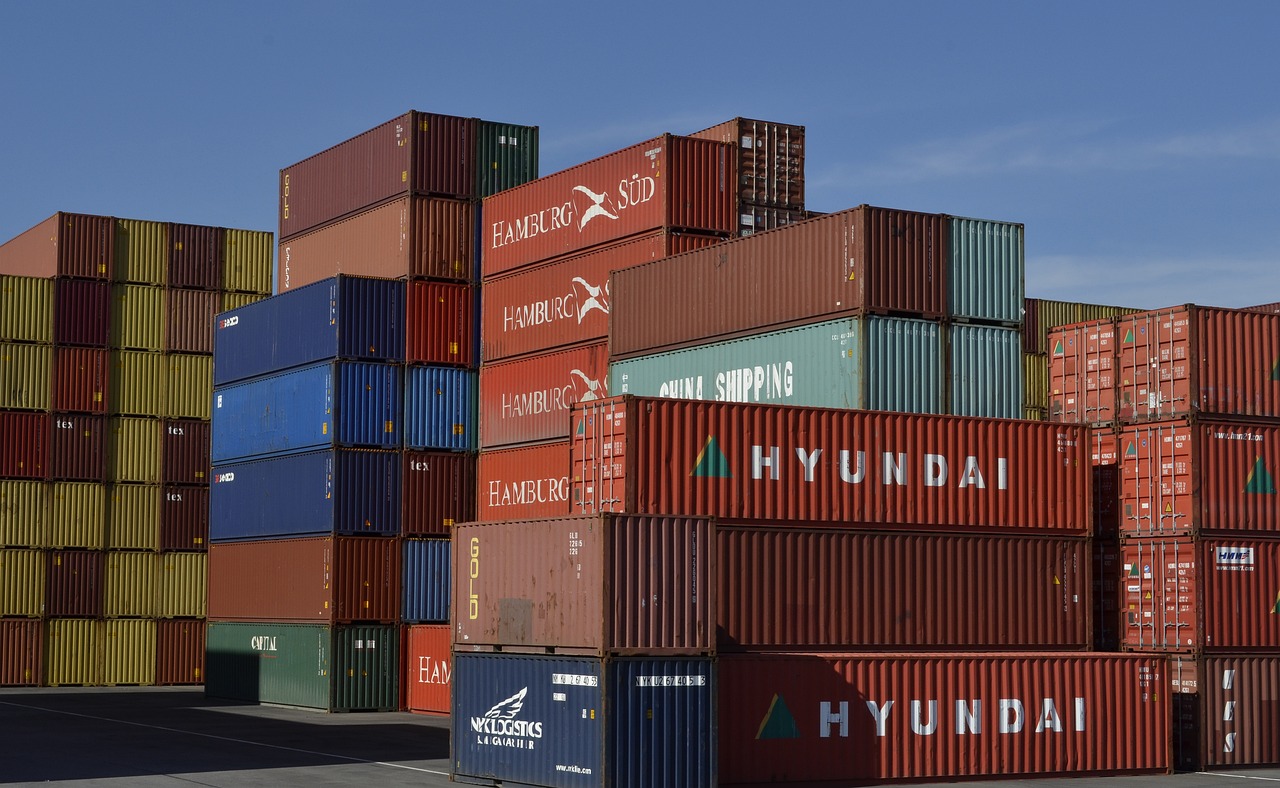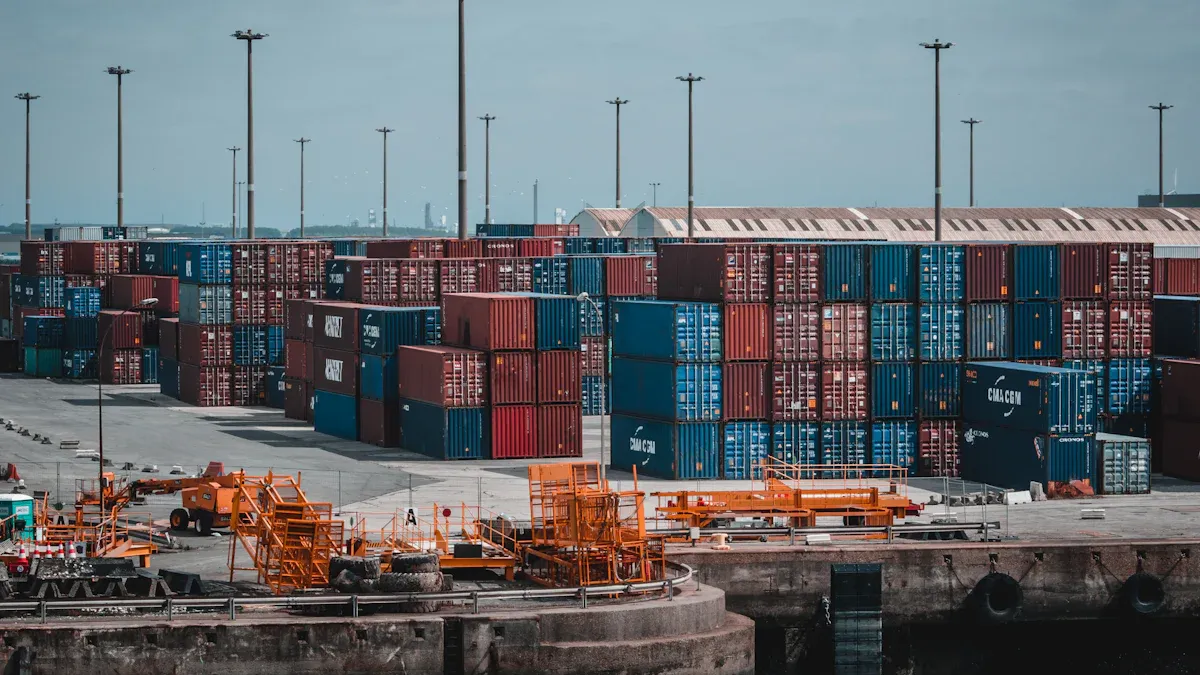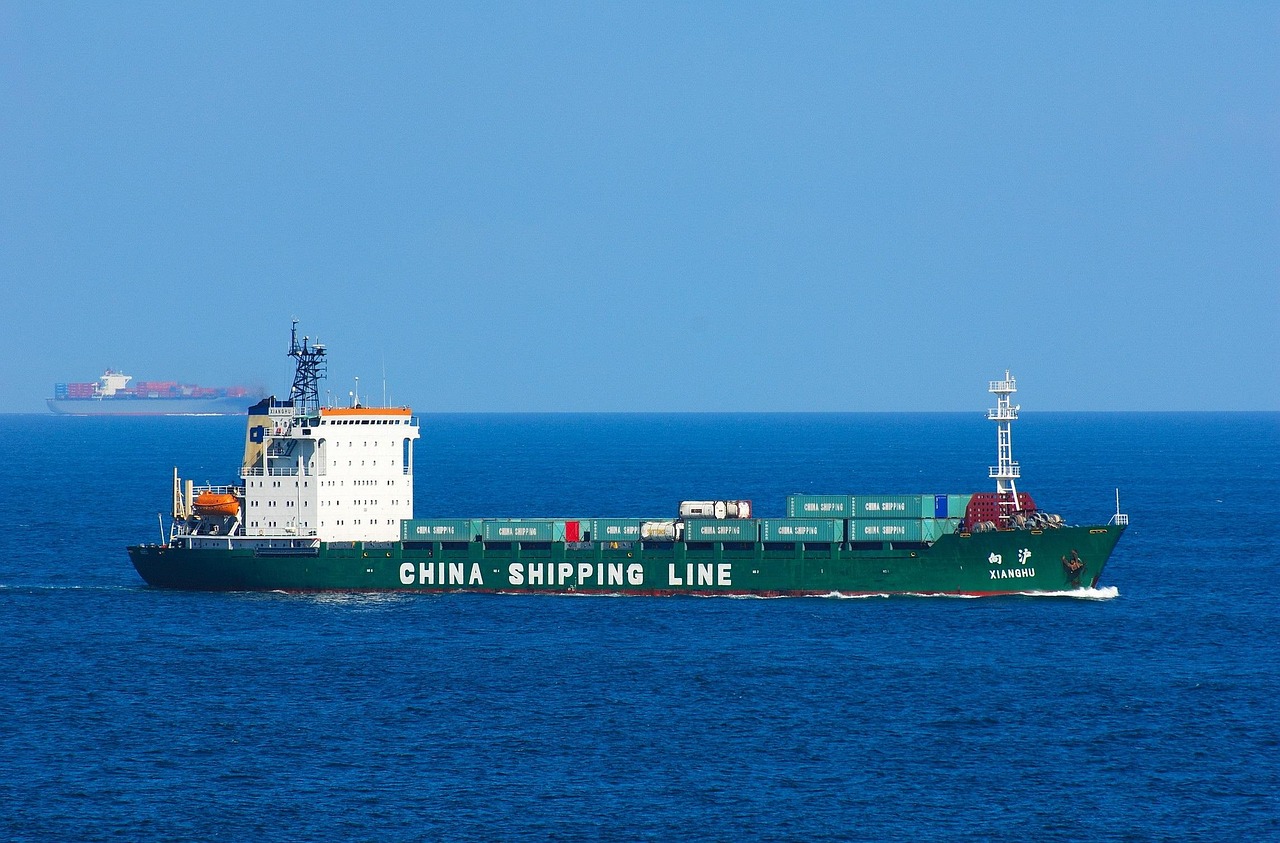How to Ship Smartly When Facing Rising Port Congestion

Port congestion disrupts global supply chains, forcing businesses to reevaluate logistics strategies. Increased delays and costs have become common due to inefficiencies at major ports. For example, Charleston in the United States reported a staggering 132.4% increase in congestion time within months. To counter these challenges, companies are adopting cargo redistribution methods to maintain operational efficiency.
Key Takeaways
Use different ports to skip crowded ones. This helps avoid delays and keeps the supply chain running smoothly.
Plan shipments early to get space and save money. Early planning reduces problems caused by busy ports.
Use technology and data tools to follow shipments and spot delays. Live data helps make smart choices during problems.
Understanding the Causes of Port Congestion

Rising Cargo Volumes and Demand
Global trade has surged in recent years, driven by economic recovery and the rapid expansion of e-commerce. Major ports are struggling to handle record-breaking container volumes, leading to bottlenecks. Average delays at U.S. West Coast ports now range from 7 to 10 days, while Asian hubs report delays of up to 14 days. The mismatch between shipping demand and port capacity has created a scenario where too many ships arrive, but unloading capacity remains insufficient. Additionally, over 20% of voyages involve empty containers, further straining terminal operations.
Labor Disruptions and Strikes
Labor disputes and workforce shortages have significantly disrupted port operations. For example, East and Gulf Coast ports faced uncertainty during negotiations with the International Longshoremen’s Association (ILA). Although a strike involving 45,000 dockworkers was averted, the threat highlighted vulnerabilities in port logistics. In Baltimore, a bridge collapse caused a 33.8% drop in TEUs over seven weeks, demonstrating how labor and infrastructure issues compound congestion challenges.
Infrastructure Limitations at Major Ports
Outdated infrastructure remains a critical issue for ports worldwide. In West Africa, container trade has doubled over the past decade, but shallow berths and reliance on foreign operators limit efficiency. Fragmented upgrades, often funded by foreign capital, fail to meet growing demand. Similar challenges exist in Southeast Asia, where ports struggle to expand capacity fast enough to accommodate increasing traffic.
Geopolitical and Regulatory Challenges
Trade route adjustments and shifting policies have added complexity to global shipping. Ports serving politically sensitive regions face compounded delays due to regulatory hurdles. Stricter environmental compliance requirements, part of the global push for sustainability, have slowed port throughput, further exacerbating congestion.
Weather-Related Disruptions
Extreme weather events frequently disrupt port operations. Typhoons in Asia and hurricanes in the Americas cause flooding and high winds, delaying cargo handling. For instance, typhoon-related disruptions in East Asia have led to prolonged wait times, forcing shippers to reroute cargo or adjust schedules.
The Impact of Congestion Port on Freight Operations
Increased Wait Times and Delays
Congestion at port significantly increases vessel wait times, disrupting shipping operations. Major ports worldwide have reported worsening delays. For instance:
Rotterdam's average vessel waiting time rose from 2.6 hours in 2023 to 5.0 hours in 2024.
Hamburg experienced peaks of 7.8 hours in September, a 3.8-hour increase from the previous year.
Shanghai saw anchor times surge by 4.7 hours, peaking at 10.1 hours in February.
These delays ripple through supply chains, causing missed delivery deadlines and reduced efficiency. Businesses relying on just-in-time (JIT) inventory models face heightened risks, as prolonged wait times disrupt production schedules and customer satisfaction.
Higher Freight Costs and Surcharges
Port congestion directly impacts freight costs. Increased transit times and rerouting raise operational expenses, which carriers often pass on to shippers. Recent economic analyses highlight this trend. Carriers have implemented General Rate Increases (GRIs), significantly elevating freight rates. Additionally, surcharges tied to capacity constraints further burden shippers. These rising costs complicate budgeting for businesses and strain profit margins, especially for small and medium enterprises.
Storage and Inventory Management Challenges
Extended delays at congested ports create inventory management challenges. Vessels often wait weeks for berth space, leading to uncertainty in stock availability. Retailers and manufacturers face missed sales opportunities as products fail to reach markets on time. Moreover, the scarcity of warehousing space, particularly for refrigerated goods during peak seasons, drives up storage costs. Businesses must adapt by maintaining higher inventory levels, which increases warehousing expenses and ties up capital.
Disruptions to Supply Chain Schedules
Port congestion disrupts supply chain schedules across regions. A closer look reveals the widespread impact:
Region | Primary Ports Affected | Key Challenges |
|---|---|---|
Europe | Antwerp, Hamburg, Valencia | Vessel delays, full yards, rail congestion |
North America | Newark, Elizabeth, Philadelphia | Intermodal delays, container dwell time increases |
Asia | Chittagong, Port Klang, Singapore | Yard congestion, equipment shortages, slow turnaround on empties |
These disruptions force businesses to adjust timelines, reroute shipments, and absorb additional costs. The unpredictability of such delays undermines supply chain efficiency and complicates long-term planning.
Optimizing Freight Operations During Port Congestion

Booking Shipments Early
Booking shipments early is one of the most effective ways to mitigate the impact of port congestion. Early bookings allow businesses to secure space on vessels and avoid last-minute surcharges. This strategy also provides carriers with sufficient time to plan routes and allocate resources efficiently. For example, companies that book shipments weeks in advance often experience fewer delays and lower costs compared to those making last-minute arrangements.
Tip: Businesses should monitor peak shipping seasons, such as the Lunar New Year or Christmas, and plan shipments well in advance to avoid capacity shortages.
By adopting this proactive approach, businesses can maintain supply chain efficiency and reduce the risk of disruptions caused by unexpected delays.
Leveraging Technology and Data Analytics
Technology and data analytics play a pivotal role in optimizing freight operations during port congestion. Real-time data enables businesses to track shipments, predict delays, and make informed decisions. Advanced tools, such as predictive analytics and automated workflows, help identify bottlenecks and optimize routes.
Company | Technology Used | Impact on Operations |
|---|---|---|
Amazon | Streamlined operations, faster order fulfillment, improved customer satisfaction. | |
Ocado | Automated storage system | Optimized warehouse space, faster order processing, high levels of accuracy in fulfillment. |
DHL | AI-driven analytics | Enhanced efficiency, reduced operational costs, improved service levels through predictive analytics. |
These examples highlight how technology adoption can transform logistics operations. Businesses leveraging real-time data and automated workflows can respond quickly to disruptions, ensuring smoother freight movement even during peak congestion periods.
Collaborating with Reliable Logistics Partners
Partnering with reliable logistics providers is essential for navigating port congestion effectively. Companies like YQN Logistics offers comprehensive solutions, including real-time visibility tools, streamlined customs clearance, and access to alternative shipping routes. YQN's premium shipping services offer faster transit times and priority handling, making them an attractive option during port congestion.
Case Study: A global retailer partnered with YQN Logistics to reroute shipments from congested West Coast ports to alternative hubs. This collaboration reduced transit times by 30% and minimized additional costs.
Proactive Planning to Mitigate Future Port Congestion
Monitoring Key Trends and Indicators
Staying ahead of port congestion requires businesses to monitor key trends and indicators that signal potential disruptions. Early warnings, such as rising import volumes or labor unrest, allow companies to adjust their logistics strategies proactively. For example, a 30% increase in import volumes at the Seattle-Tacoma port has already led to cargo rerouting, creating additional strain on Los Angeles-Long Beach.
Indicator | Data Point |
|---|---|
Increase in import volumes | |
Impact of labor strikes | Disruption leading to cargo re-routing |
Diversion of cargo to other ports | Increased congestion at Los Angeles-Long Beach |
By tracking these metrics, businesses can identify bottlenecks early and implement solutions to minimize delays.
Diversifying Shipping Routes
Diversifying shipping routes is essential for mitigating the impact of port congestion. Businesses can explore alternative shipping routes that bypass heavily trafficked trade lanes. For example, the Northern Sea Route offers a shorter path between Asia and Europe, reducing transit times compared to traditional routes through the Suez Canal.
• Key Benefits of Route Diversification:
1. Reduced exposure to geopolitical risks.
2. Improved reliability in meeting delivery schedules.
3. Enhanced adaptability to weather-related disruptions.
Case Study: A global electronics manufacturer successfully reduced delays by rerouting shipments from the Port of Los Angeles to the Port of Houston. This shift not only improved delivery times but also lowered overall transportation costs.
Building Flexibility into Supply Chains
Flexibility is a cornerstone of resilient supply chains. Companies that adapt quickly to disruptions can maintain operational efficiency and customer satisfaction. Metrics such as reduced time-to-market and improved cost management validate the importance of adaptability.
Metric | Benefit |
|---|---|
Improved Customer Satisfaction | Meet delivery expectations, even under surge demand or sudden shocks. |
Reduced Time-to-Market | Launch new products and respond to market changes faster. |
Improved Cost Management | Minimize excess inventory holding and reduce unnecessary costs. |
More Resilient | Better withstand shocks and recover faster from disruptions. |
Increased Opportunity for Revenue | Ability to act on new business opportunities more rapidly. |
Building flexibility into logistics planning ensures businesses can respond effectively to unforeseen challenges, such as weather disruptions or geopolitical shifts.
Establishing Contingency Plans
Contingency planning is essential for mitigating the impact of port congestion. Businesses should develop alternative shipping routes, identify backup suppliers, and maintain safety stock to handle delays. For instance, companies relying on West Coast ports can preemptively reroute shipments to Gulf Coast or Canadian ports during peak congestion periods. These measures reduce dependency on a single node and enhance supply chain resilience.
Tip: Regularly review and update contingency plans to account for evolving risks and operational changes.
Port congestion challenges global trade, but businesses can overcome its impact with strategic measures. Leveraging alternative ports, booking shipments early, and collaborating with logistics partners like YQN Logistics ensure supply chain efficiency. Get more real-time info of congested ports and professional logistics solutions by contact at info@yqn.com.
FAQ
What are the main causes of port congestion?
Port congestion arises from increased cargo volumes, labor disruptions, outdated infrastructure, geopolitical challenges, and weather-related events. These factors collectively strain port operations and disrupt global supply chains.
How can businesses reduce delays caused by port congestion?
Businesses can reduce delays by diversifying shipping routes, leveraging alternative ports, booking shipments early, and utilizing real-time visibility tools to monitor and adjust logistics strategies proactively.
Why is proactive planning essential for mitigating port congestion?
Proactive planning helps businesses anticipate disruptions, establish contingency plans, and maintain supply chain flexibility. This approach minimizes delays, reduces costs, and ensures operational continuity during peak congestion periods.
See Also
Essential Tips to Prevent Demurrage Fees on Cargo
Impact of U.S. Port Charges on Chinese Shipping Dynamics
Best Chinese Sea Freight Logistics Companies for 2025
YQN Presents Innovative Digital Logistics at Intermodal 2025

Shipping with YQN - Global Logistics at Your Fingertips
YQN has established subsidiaries worldwide, covering North America, Latin America, Southeast Asia, and the Middle East. We have partnered with 300+ top shipping and airline companies and have access to 3500+ high-quality supplier resources. YQN also has a professional customer service and fulfillment team of over 500 people to provide more worry-free and efficient international logistics services.
Contact Us
You can also email us at info@yqn.com.

